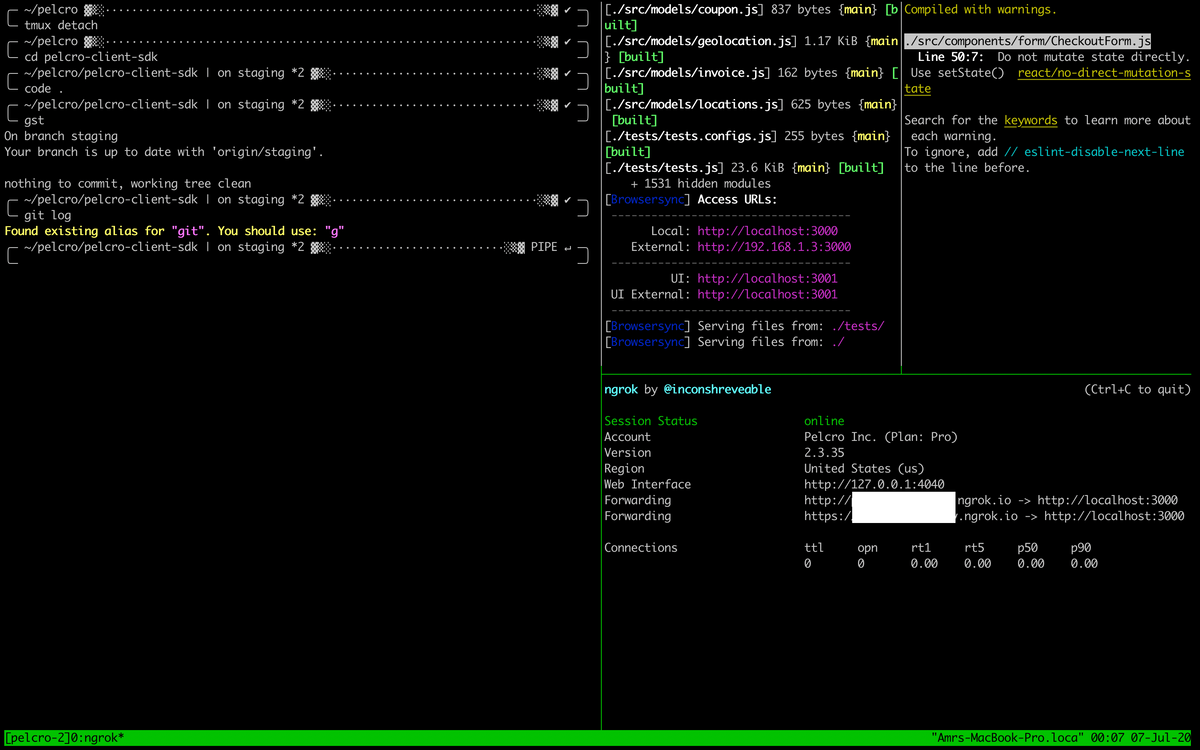

Tmux is basically a terminal multiplexer allowing you to create and access different terminal sessions within a single window. Here is a complete documentation and available template links. Once you have installed, you can open the ~/.zshrc file to add plugins like git, change themes and modify stuff. The amount of already present templates is just huge.Įxecute this in your terminal to get Oh-my-zsh: sh -c "$(curl -fsSL )" It can be used to customize and show a lot of information according to your will.

It makes your life much more easier by showing a lot more information in your shell especially when you are using git. If you felt Zsh increases your productivity and takes your command line experience to a whole new level, wait till you have used Oh My Zsh. Oh My ZshĪ big shoutout to Robby Russell for creating this gem.
#Tmux for mac install
So, to install ZSH in your Mac, all you do is: Once you have it installed, you can run the command zsh to start the Z Shell. I feel Z shell increases productivity a lot, but personal opinion. I have been using Z Shell for quite some time and have been used to the commands and ways so much, it is a little difficult to use bash. All you need to do is unzip and put it into Applications folder and you are ready to use it. You can download and unzip iTerm2 from here. The main reason is it comes with more customising options and better color support more than anything else. So the very first step is to forget using the default terminal, and use iTerm2. The very first question was "Is the default terminal of Mac good?" Well, it's good enough, but most of the digging into led me to the same answer - Use iTerm2.
#Tmux for mac how to
So, when I started using a Macbook, the first question (apart from when to use CMD and CTRL) was which terminal and how to set it up with zsh and tmux. Here I am going to talk mainly about the terminal (yes, I am just gonna call that throughout).

Being a linux user for most part of my developer life, the most important thing of my life is the terminal (or shell or command line or console or whatever you want to call it) followed by text editor.


 0 kommentar(er)
0 kommentar(er)
